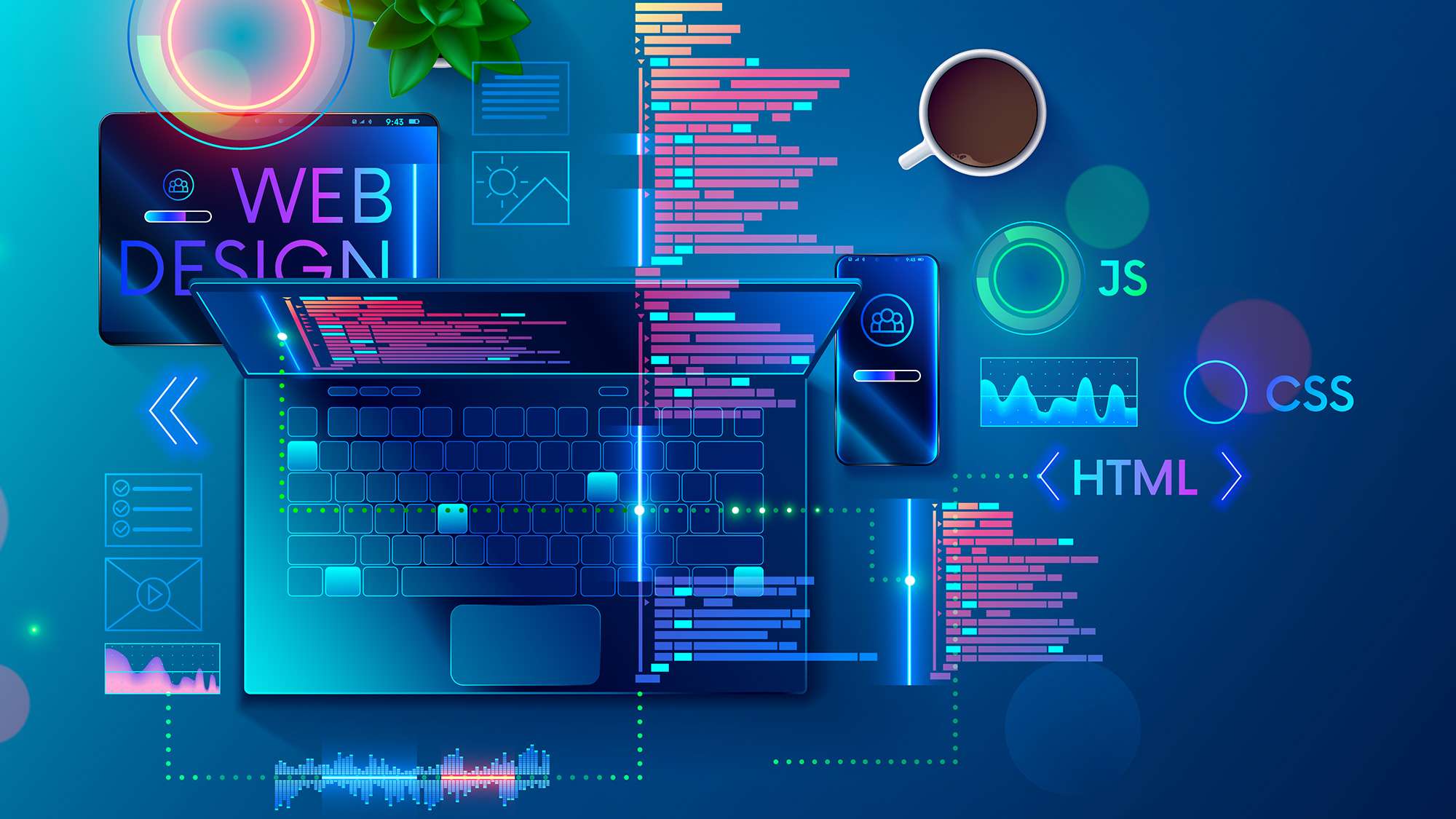Imaginative Website Design Solutions for Modern and Engaging Internet Sites
In the realm of web design, the pursuit of modern-day and appealing options has come to be increasingly crucial for businesses intending to capture individual focus. By incorporating strong color plans, interactive aspects, and responsive designs, developers can develop experiences that not just resonate with customers but also boost brand name identity.
Accepting Bold Color Design
In web layout, the calculated use strong color design can significantly improve individual interaction and brand name identity. By using vibrant tones, developers can develop aesthetically striking sites that catch attention and cultivate a remarkable experience. A well-chosen shade scheme not only reflects a firm's values however also evokes certain emotions that can influence customer behavior.
Strong shades can be used to direct customers' interest to crucial elements such as contact us to action, improving conversion rates. Utilizing contrasting shades for switches and web links can make these aspects stand out, triggering users to interact more readily. In addition, a natural color design throughout the internet site reinforces brand name acknowledgment, creating a feeling of knowledge and trust amongst site visitors.
Nevertheless, it is critical to stabilize vibrant colors with ample white area to prevent frustrating users. Efficient use typography additionally matches bold shades, ensuring readability while keeping aesthetic allure. Inevitably, welcoming bold color design in website design not only elevates aesthetic quality however likewise plays an integral role in attaining tactical service objectives, making it a crucial consideration for contemporary internet growth.

Using Interactive Aspects
Interactive components are vital in modern internet design, as they significantly boost user interaction and produce a more vibrant browsing experience. By including attributes such as animations, hover results, and clickable elements, websites can motivate customers to check out web content extra completely and return for future gos to.

Micro-interactions, such as subtle computer animations when a switch is clicked or a type is submitted, can also boost the individual experience by giving prompt feedback. These small details can make the site really feel more receptive and active, fostering a feeling of connection in between individuals and the website.
Furthermore, gamification elements, such as rewards for completing particular activities, can motivate users to involve with the material extra deeply. By thoughtfully incorporating these interactive parts, internet designers can develop an unforgettable and interesting on-line experience that resonates with customers and encourages them to return.
Applying Receptive Design
Applying responsive style is vital in today's multi-device landscape, making sure that websites supply an ideal viewing experience across numerous screen dimensions. As customers progressively access the web with smart devices, tablets, and desktop computers, a one-size-fits-all method is no much longer sensible. Receptive layout enables seamless navigation and interaction, adjusting format and material to fit the tool being used.
Key principles of responsive style consist of liquid grids, adaptable photos, and media questions. Liquid grids use relative units, such as portions, instead of repaired pixels, enabling components to resize proportionately. Adaptable images range within their having components, protecting against overflow and maintaining visual integrity. Media queries help with the application of different styles based upon the tool's characteristics, such as size, elevation, or resolution, permitting developers to tailor the individual experience properly.
Moreover, receptive style improves SEO efficiency, as online search engine favor mobile-friendly sites. By executing receptive layout, companies not only boost individual satisfaction and involvement however also raise their reach in an affordable digital landscape. As modern technology remains to advance, embracing responsive layout has come to be an essential practice for any kind of modern and interesting site.
Incorporating Multimedia Material
Multimedia web content plays an click here for info essential function in creating appealing and dynamic web experiences that record individuals' focus and improve understanding. By integrating text, pictures, sound, and video, sites can provide a richer story that appeals to different finding out styles and choices. This integration not only strengthens user interaction yet also help in sharing intricate ideas succinctly.
Integrating high-quality pictures and infographics can damage up textual content, making it much more absorbable. Video tutorials and presentations can supply comprehensive understandings that static content may not completely interact. Audio components, such as podcasts or history music, can likewise boost the ambience of a website, creating a much more immersive experience.
Additionally, the critical use multimedia can boost SEO efficiency, as search engines favor diverse material kinds, raising presence. Nonetheless, it is crucial to ensure that multimedia elements do not hinder page Recommended Site lots times, as this can bring about customer frustration. By stabilizing multimedia assimilation with efficiency considerations, web designers can develop aesthetically attractive and functional websites that resonate with individuals, promoting a deeper connection and motivating return sees.
Prioritizing Individual Experience

To accomplish an optimal user experience, developers need to focus on several key concepts. Clear phone calls to action, readable typography, and arranged material guide users, lowering cognitive tons.
Additionally, incorporating customer comments into the layout process is important. Regular screening with genuine customers assists identify discomfort points and areas for renovation, permitting repetitive enhancements. Ultimately, focusing on UX not only boosts individual satisfaction yet also drives involvement and conversion rates, making it a critical component of modern website design approaches. By placing customers at the center of layout efforts, web sites can create enduring, positive perceptions that encourage return sees.
Verdict
To conclude, contemporary internet layout solutions that highlight strong shade schemes, interactive elements, responsive style, and Learn More multimedia web content significantly enhance individual interaction and contentment. Focusing on user experience through clear layouts and constant comments additionally adds to enhanced conversion prices. By embracing these approaches, internet sites can effectively captivate visitors and reinforce brand identity, ultimately leading to a more dynamic and engaging on-line visibility. The assimilation of these layout concepts is crucial for attaining modern-day website design goals.